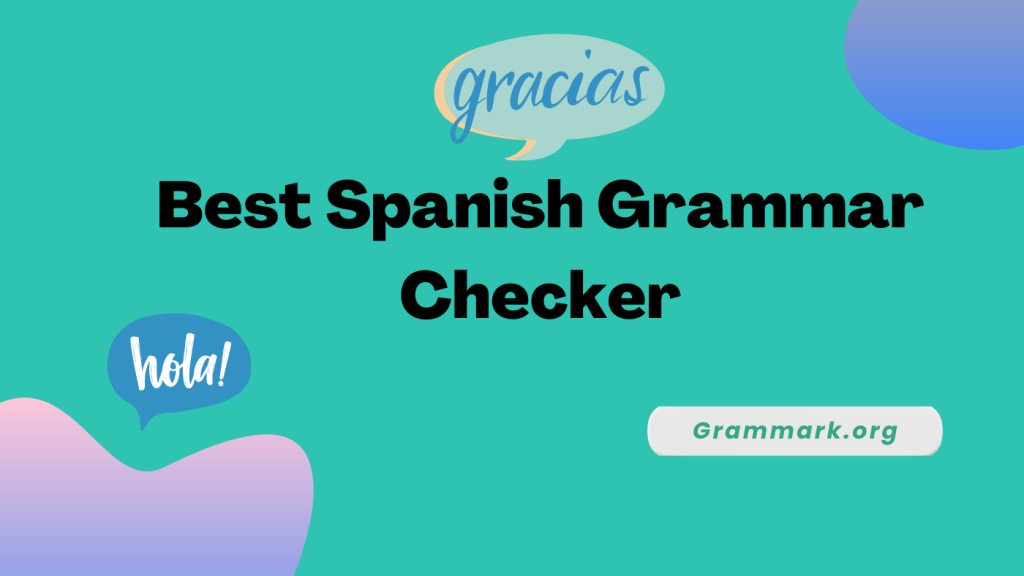Rhetorical strategies are the best communication tools that help you persuade, engage, and connect with your audience more effectively.
Writers, speakers, marketers, and students can use these techniques to make their messages more memorable and impactful. From alliteration and metaphors to hyperbole and chiasmus, these strategies work in speeches, essays, advertisements, and everyday conversations.
In this post, I’ll explore 15 rhetorical strategies that can transform your message from ordinary to compelling, ensuring your words leave a lasting impact.
What are Rhetorical Strategies?
Rhetorical strategies are strategic techniques I have used to persuade and engage an audience effectively. You can incorporate these strategies through speeches, essays, debates, advertisements, and everyday conversations. When used skillfully, rhetorical strategies have the power to evoke emotions, influence opinions, and leave a lasting impact on listeners or readers.
Rhetorical strategies have three fundamental pillars: Logos, Ethos, and Pathos.
Logos is an appeal to logic and reason. It involves presenting factual information, logical arguments, and rational evidence to support a speaker’s or writer’s point of view. It will help you build credibility and convince the audience through solid evidence and sound reasoning.
Ethos is an appeal to credibility and ethics. It establishes the speaker’s or writer’s credibility, authority, and trustworthiness. Showcasing expertise, qualifications, and moral values enhance the speaker’s or writer’s persuasive power.
Pathos is an appeal to emotions. In this technique, you can use language, storytelling, and vivid imagery to evoke emotions and create a connection with the audience. It plays a crucial role in engaging the audience on an emotional level, fostering empathy, and influencing their perspectives.
When to Use Rhetorical Strategies?
You can use rhetorical strategies to achieve different objectives in various contexts and situations. Here are some instances where employing rhetorical strategies can prove beneficial:
- Public Speaking: Whether delivering a keynote address, a persuasive presentation, or a motivational speech, utilizing rhetorical strategies can help speakers engage their audience, convey their message effectively, and inspire action.
- Writing: Rhetorical strategies are invaluable in writing across various genres. From essays and articles to novels and advertising copy, employing these strategies can enhance the impact of your writing and captivate readers.
- Debates and Discussions: When engaging in debates or discussions, using rhetorical strategies can help present arguments persuasively, counter opposing viewpoints effectively, and win over the audience.
- Marketing and Advertising: Rhetorical strategies are crucial in creating effective marketing and advertising campaigns. Marketers can influence consumer behavior and drive sales by appealing to emotions, emphasizing benefits, and using persuasive language.
- Everyday Conversations: Rhetorical strategies can also be employed in casual conversations to effectively make a point, connect with others, and influence opinions.
Understanding when and how to use rhetorical strategies can empower you to become a more persuasive and influential communicator.
15+ Commonly Used Rhetorical Strategies & Examples
Let’s now explore and examine 15 commonly used rhetorical strategies, along with unique examples showcasing their effectiveness in communication.
1. Alliteration
Alliteration is a rhetorical device used to create a memorable and catchy phrase. It works by repeating the same sound at the beginning of two or more words in a sentence or phrase. You can use it in various forms of writing, including poetry, literature, and advertising slogans. Alliteration helps emphasize a particular point, create a rhythmic pattern, or draw attention to certain words or phrases. It helps you to create a rhythmic flow and draw attention to specific words or phrases.
Examples:
“Sally sells seashells by the seashore.”
“The big brown bear bellowed in the woods.”
2. Amplification
Amplification involves expanding on a point or idea by providing additional details, examples, or explanations. Emphasizing the significance of a point and providing a deeper understanding of the topic helps to strengthen arguments and make them more convincing.
Examples:
“The impact of climate change is not limited to rising temperatures. It affects our ecosystems, wildlife habitats, and agricultural productivity. It poses a threat to our coastal communities and increases the frequency and intensity of natural disasters.”
“The benefits of exercise go beyond physical health. Regular physical activity boosts mood, reduces stress, improves cognitive function, and enhances overall well-being.”
3. Anaphora
Anaphora is the recurrence of a phrase or word at the beginning of sentences that are successive (or clauses). It creates a rhythmic and emphatic effect, emphasizing key ideas and evoking emotions. This technique helps you create an impact on the listener or reader, so they can understand the central message.
Examples:
“We will fight for justice. We will fight for equality. We will fight for a better future.”
“He was tall, he was dark, he was handsome.”
4. Antanagoge
Antanagoge helps you with balancing a negative point with a positive one to provide perspective and lessen the impact of the negative. This technique helps you to reframe a negative situation by highlighting the positive aspects and encouraging a more balanced perspective. Through this, you can counterbalance negativity and maintain optimism.
Examples:
“Yes, the task may be challenging, but the reward is worth the effort.”
“Although the project faced setbacks, it provided valuable learning experiences and paved the way for future success.”
5. Antiphrasis
Through Antiphrasis, you can use words with meanings opposite to their literal sense for ironic or humorous effect. This rhetorical device adds wit and irony to communication, creating a contrasting effect that captures attention and generates a memorable impression.
Examples:
“Isn’t it a lovely day?” (when it’s raining heavily)
“He’s a real genius!” (referring to someone who consistently makes foolish mistakes)
6. Aporia
Aporia allows you to express doubt or uncertainty to raise questions and stimulate critical thinking. It prompts reflection and encourages individuals to think deeply about a subject. This technique fosters critical thinking and opens the door to new ideas and possibilities.
Examples:
“I’m not sure if we can solve this problem, but what if we approach it from a different perspective?”
“I find myself questioning the conventional wisdom. Are we truly making progress, or are we merely spinning our wheels?”
7. Cacophony
Cacophony is the use of harsh or discordant sounds to create an unsettling or jarring effect. It evokes strong emotions and creates a vivid sensory experience, leaving a lasting impact on the audience. You can use this technique to show urgency or create intensity.
Examples:
“The screeching tires, honking horns, and blaring sirens filled the air, creating a cacophony of chaos.”
“The crashing waves and thunderous applause of the crowd merged into a symphony of sound.”
8. Chiasmus
Chiasmus involves reversing the order of a word or a phrase to create parallelism and contrast. This adds symmetry and balance to your language, making it more memorable and thought-provoking.
Examples:
“You can take the woman out of the city, but you can’t take the city out of the woman.”
“Love makes time pass; time makes love pass.”
9. Epiphora
Epiphora, aka epistrophe, is the recurrence of a word or a phrase towards the end of successive sentences or a sentence. This rhetorical device creates a rhythmic and emphatic effect, reinforcing key ideas and leaving a lasting impression on the audience.
Examples:
“Friends are everything, Friends are family, Friends are honest”
“We must fight for justice, we must fight for equality, we must fight for a better future.”
10. Euphemism
Euphemism involves using mild or indirect language to replace harsh or unpleasant words or phrases. This technique is used for more tactful and sensitive communication, particularly on delicate or sensitive topics. It softens the impact of potentially harsh or offensive language.
Examples:
“He passed away.” (instead of “he died”)
“She’s under the weather.” (instead of “She is sick”)
11. Hypophora
Hypophora involves asking a question and immediately providing an answer to create emphasis and engage the audience. It encourages active participation from the audience and reinforces key points by posing and answering relevant questions.
Examples:
“Why is education important? Because it equips us with the knowledge and skills we need to succeed in life.”
“What can we do to protect the environment? We can reduce our carbon footprint, recycle, and support sustainable initiatives.”
12. Hyperbole
Hyperbole involves exaggerating for emphasis or dramatic effect. It creates a vivid and attention-grabbing effect, leaving a strong impression on the audience. Its technique immediately grabs the attention of the audience with the author’s witty sense of humor.
Examples:
“I’ve told you a million times to clean your room!”
“I’m so hungry, I could eat a horse!”
13. Metaphor
Metaphor involves comparing two unrelated things to highlight similarities and create a deeper understanding. It provides a fresh perspective and engages the audience’s imagination. They make communication more captivating and memorable by creating vivid imagery.
Examples:
“Her smile is a ray of sunshine.”
“Life is a journey filled with ups and downs.”
14. Simile
A simile involves comparing two things using “like” or “as” to illustrate a point or create imagery. They add color and vividness to language, helping the audience visualize and connect with the message.
Examples:
“He fought like a lion.”
“Her voice was as sweet as honey.”
15. Zeugma
Zeugma is a rhetorical device where a word is used to govern or modify a couple or more words (or phrases) in a sentence, but the word is used differently concerning each of the words it modifies. In other words, it is a way of using a word in a sentence where it is grammatically correct with two or more words, but the word has a different meaning or context with each of those words.
Examples:
“She broke his car and his heart.”
“He lost his job and his dignity.”
How to Identify Rhetorical Devices?
Identifying rhetorical devices requires careful observation and an understanding of their characteristics. Here are some tips to help you smartly identify rhetorical devices:
- Listen for patterns: Pay attention to recurring words, phrases, or structures that create emphasis or rhythm.
- Analyze the use of language: Look for language that aims to evoke specific emotions or create a connection with the audience.
- Notice contrasts: Identify instances where contrasting ideas or words are used to create a dramatic effect or highlight a point.
- Observe the overall structure: Analyze the organization and flow of a piece of communication, identifying patterns and structures that enhance the message.
- Consider the impact: Reflect on how the communication makes you feel and the lasting impression it leaves on you. This can help identify the presence of rhetorical devices.
Related Reads:
- Mechanics of Writing for Effective Writing
- What is Direct Characterization
- Top Online Tools for Writers
Conclusion: Practice 15 Useful Rhetorical Strategies For Personal And Professional Growth
Learning rhetorical strategies takes practice, but the results speak for themselves. Your writing and speaking become more engaging when you use techniques like anaphora, metaphors, and hyperbole strategically.
These tools help you create emotional connections, build credibility, and make your points stick with readers and listeners. Start small by picking two or three strategies that feel natural to you.
Experiment with them in your email, presentation, or social media post. Watch how your audience responds differently when you apply these communication techniques.


